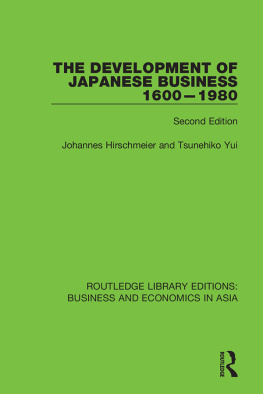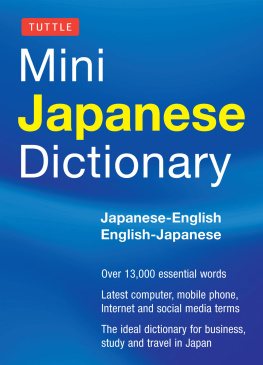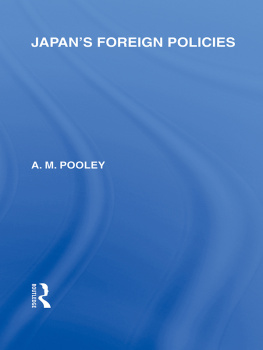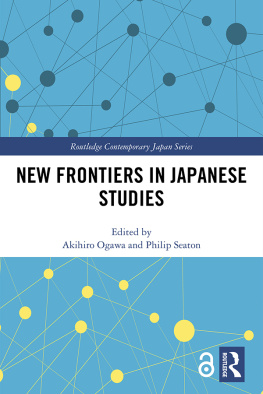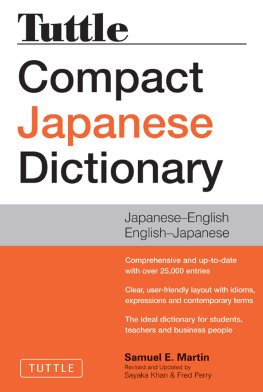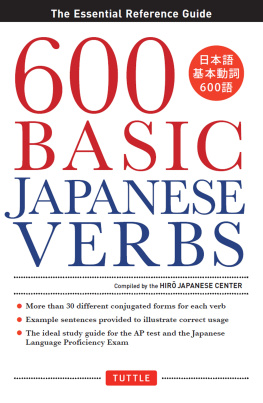ROUTLEDGE LIBRARY EDITIONS: BUSINESS AND ECONOMICS IN ASIA
Volume 20
JAPANESE BUSINESS DOWN UNDER
JAPANESE BUSINESS DOWN UNDER
Patterns of Japanese Investment in Australia
DAVID W. EDGINGTON
First published in 1990 by Routledge
This edition first published in 2019
by Routledge
2 Park Square, Milton Park, Abingdon, Oxon OX14 4RN
and by Routledge
52 Vanderbilt Avenue, New York, NY 10017
Routledge is an imprint of the Taylor & Francis Group, an informa business
1990 David W Edgington
All rights reserved. No part of this book may be reprinted or reproduced or utilised in any form or by any electronic, mechanical, or other means, now known or hereafter invented, including photocopying and recording, or in any information storage or retrieval system, without permission in writing from the publishers.
Trademark notice: Product or corporate names may be trademarks or registered trademarks, and are used only for identification and explanation without intent to infringe.
British Library Cataloguing in Publication Data
A catalogue record for this book is available from the British Library
ISBN: 978-1-138-48274-6 (Set)
ISBN: 978-0-429-42825-8 (Set) (ebk)
ISBN: 978-1-138-36868-2 (Volume 20) (hbk)
ISBN: 978-0-429-42908-8 (Volume 20) (ebk)
Publishers Note
The publisher has gone to great lengths to ensure the quality of this reprint but points out that some imperfections in the original copies may be apparent.
Disclaimer
The publisher has made every effort to trace copyright holders and would welcome correspondence from those they have been unable to trace.
Japanese Business Down Under
Patterns of Japanese Investment in Australia
David W. Edgington
First published 1990 by Routledge
11 New Fetter Lane, London EC4P 4EE
Simultaneously published in the USA and Canada by Routledge
a division of Routledge, Chapman & Hall, Inc.
29 West 35th Street, New York, NY 10001
1990 David W Edgington
Typeset by PontingGreen Publishing Services, London
Printed and bound in Great Britain by
Mackays of Chatham PLC, Chatham, Kent
All rights reserved. No part of this book may be reprinted or reproduced or utilized in any form or by any electronic, mechanical, or other means, now known or hereafter invented, including photocopying and recording, or in any information storage or retrieval system, without permission from the publishers.
British Library Cataloguing in Publication Data
Edgington, David W. 1950
Japanese business down under: patterns of investment in Australia.
1. Australia. Japanese multinational companies history
I. Title
338.88952094
ISBN 041503499X
Library of Congress Cataloging in Publication Data
Edgington, David W. (David William)
Japanese business down-under: patterns of Japanese investment in Australia/David W. Edgington.
p. cm.
Bibliography: p.
ISBN 041503499X
1. Corporations, JapaneseAustralia. 2. Investments, JapaneseAustralia. I. Title.
HD2930.E341989
338.88952094dc20
8910384
CIP
Contents
The presence of Japanese corporations in Australia has increased rapidly since the early 1950s. Up to the mid-1980s, Japanese companies found it necessary to locate in Australia, first to satisfy Japans substantial demand for Australian raw materials; second to penetrate Australias consumer, industrial, and commercial markets; third to establish Japanese-controlled or joint-venture factories; and finally to help make Japan into a major source of financial investment. In 1981, when this research project began, Japanese firms appeared poised to take advantage of a new phase of economic interdependence, based on the export to Japan of Australian energy commodities and processed raw materials. This was expected to lead to even higher levels of Japanese involvement in Australian mining and resource projects. At the same time, Japanese industrial corporations were well placed to take advantage of Australias increasing demand for capital equipment for resource development and electricity generation, as well as the rapid expansion of the Australian economy. Not only was the greater use of Japanese machinery and technology anticipated, but so too was the greater requirement for Japanese financial capital.
Since then, the Australian resources boom has evaporated, and Australia discovered it cannot rely solely on minerals and energy exports to be the driving force in the bilateral commercial relationship with Japan. None the less, during the early 1980s economic connections between the two countries became more diversified as a number of Japanese banks and construction companies began to establish themselves in Australia. More recently, the sharp strengthening of the yen after September 1985 increased the costs of exporting for Japanese companies, causing many to expect Japan to retain its market share in Australia by a further shift of its industrial capacity offshore into that country. As Australian Federal and State governments anticipate capturing some of that capital in new investments, perhaps it is worthwhile to look backwards and ask how and why, and also where, Japanese corporations have set up their business activities in Australia.
Such is the aim of this book, which examines the post-war location and behaviour of Japanese companies in Australia by focusing on Japanese trading companies (the sg shsha), manufacturing companies, banks, and financial institutions. The study period begins generally at the time of the 1957 Australia-Japan Commerce Agreement and concludes at the end of 1985. Most of the analysis relies on data from surveys I have carried out in Japan and Australia and what was, at the time of writing, the latest comprehensive listing of Japanese business activity in Australia. It deals therefore with all major aspects of Japanese investment up to 1985, including the most recent wave associated with large-scale construction and tourism projects. The book concludes with a short epilogue covering the major events of 1986 and 1987.
Whilst this study is about Japanese companies operating in Australia, it is hoped that this book will have a more general appeal for those readers interested in the overseas investment decisions of transnational corporations (TNCs). Although a vast literature now exists on transnationals, more is known about United States-based corporations than those headquartered in other countries. Yet, Japanese economy and society are so different to those of the UK and USA that it is highly likely that Japanese investment will reflect the peculiar characteristics of its corporate culture and economic development.
As a host country, Australia provides a unique physical, economic, and regulatory environment that will influence strongly the behaviour of a transnational corporation. It has large resource endowments, a small but affluent population and skilled workforce, a federal government system, and a history of accepting foreign capital ever since first settlement: unparalleled conditions for overseas investment. Studying Japanese companies in Australia can sharpen an analysis of transnational corporate behaviour in general.


